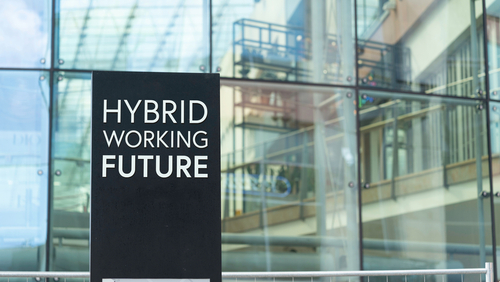HOMENEWS & INSIGHTS
The future of the workplace and hybrid working
The official government message encouraging people to work from home is expected to end with the final step out of lockdown. For many employees though, homeworking is here to stay. According to a recent BBC survey, 43 of 50 big UK employers will not bring staff back to the office full time. Instead, employees will mix homeworking and coming into the office.
For businesses considering hybrid working, this article explains how to build on the lessons learned during the pandemic, as well as practical and contractual issues to consider and pitfalls to avoid.
Feedback and reflection
A really worthwhile exercise is to find out from employees about their experience of homeworking. This can be done through an anonymous survey, team meetings or employee representative groups. Important questions include which work activities went well remotely and which did not? Do they have any concerns about Covid-19 when coming back to the workplace or commuting?
For many managers, managing staff remotely was a new skill that they had to develop quickly. Line managers should reflect on the challenges of managing remotely and how they adapted. Good practice and concerns should be shared.
Hybrid working – practical issues
If you are considering hybrid working, here are some considerations:
- Do you need to insist staff come in for a minimum number of days each week or will it be optional?
- Will employees have the right to choose which days they come in?
- Will there be enough desk space if you operate hot desking and staff can choose their days to come into the workplace?
- Will you embrace the wider definition of hybrid working and allow employees flexibility in their working hours?
- Do you want all employees to come into the office on the same days for team meetings and collaborative work?
- Can employees work from abroad? Look out for any immigration or tax implications.
We recommend introducing a policy that sets out your expectations on hybrid working. Other policies may need updating such as those relating to homeworking, data protection, confidentiality, IT, use of company equipment and anti-harassment to address online bullying.
Changing contract terms
It is crucial that new arrangements are reflected in the contract of employment or statement of particulars. This includes any requirement to come into the office, whether on specified days or as required by the business. Not only are you legally required to ensure that the contract is updated within a month of changes to the place of work, but clearly setting down the arrangements helps avoid disputes.
What if employees resist the changes?
Check the employee’s contract as it may allow you to make changes. A word of warning; this may not give you carte blanche to introduce any changes immediately. We can advise you on how to bring about changes safely. Even if the contract does not give you flexibility, we can help you make the changes if the employee does not agree.
In both cases, you need to listen to the employee’s reasons for objecting to the changes. There may be an indirect discrimination claim waiting to happen. For instance, younger employees’ home environment may be less conducive to homeworking, with less space, in shared accommodation or with small children at home.
Pitfalls: in-group and out-group dynamics
Hybrid working can unintentionally create an in-group of regular office-based workers and an out-group of those working wholly or mostly remotely. Remote workers may be left out of decision making or their work may be overlooked due to what behavioural scientists at the LSE describe as action bias and availability heuristics. This can be summed up as ‘out of sight, out of mind’.
Out-group and in-group dynamics are bad for morale and, along with increased use of digital communication, provide fertile ground for conflict. This dynamic may also undermine equality, for instance if the out-group of homeworkers has a higher proportion of female workers because women tend to shoulder more childcare and may opt for home working to squeeze in the school runs. Where this plays into decisions about promotion and pay rises, this may risk discrimination claims.
Ways to reduce the exclusion of homeworkers include requiring all staff to be in the office on the same day or days each week. Space may not allow for this though, particularly if cautious employers allow for future social distancing. With meetings, either everyone meets in person or everyone is on their own device. This avoids the remote worker missing out on side conversations.
Pitfalls: measuring performance
While appraisals can easily be carried out online, often assessment of performance is strongly informed by the manager’s observation of the employee. This could put those employees who spend less time in their line manager’s physical presence at a disadvantage compared to regular office workers. Managers need to compensate for the lack of face-to-face time by having frequent one-to-one meetings with remote workers. The need to focus on objectives, outcomes, and feedback in assessing staff becomes even more important.
Pitfalls: two workplaces
With the flexibility of hybrid working comes the complexity of employees having two workstations. As we explained in our article on homeworking, employers are responsible for their employees’ health and safety at home. While the Health and Safety Executive (HSE) took a lenient view earlier in the pandemic and employees may have ‘made do’ with their set up, if homeworking is permanent, proper workplace assessments need to be carried out. The HSE offers guidance on how to protect homeworkers.
Contact us
For further information, please contact one of our Employment experts.
This article is for general information only and does not constitute legal or professional advice. Please note that the law may have changed since this article was published.
Share article
Our offices
Contact Us
5 Poole Road
Bournemouth
Dorset
BH2 5QL
Tel 01202 377800
9 Poole Road
Bournemouth
Dorset
BH2 5QR
01202 377800


